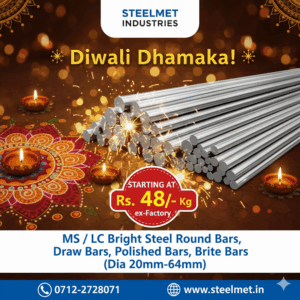Free-cutting steels like 12L14, 1215, and 11SMnPb30 have long been the darlings of high-volume machining. Their sulfur and lead additives promised effortless chip control, extended tool life, and blazing-fast feed rates—perfect for mass-producing bolts, fittings, and small precision components. But as manufacturing evolves, these once-indispensable materials are losing their luster.
7 Reasons Free-Cutting Steels Are Falling Out of Favor
1. The Cold Drawing Revolution
Modern cold drawing techniques have dramatically improved the machinability of standard carbon steels:
SAE 1018 (EN3B): After cold drawing, its machinability approaches 1215 levels
EN8 (SAE 1045): Properly processed, it rivals free-cutting grades while offering 30%+ higher strength
AISI 1144 (EN1A): A “semi-free-cutting” alternative with better mechanical properties
Cold working improves surface finish and dimensional stability, reducing the need for sulfur/lead additives while maintaining competitive machining speeds.
2. The Hidden Costs of “Free” Machining
While free-cutting steels save time on the shop floor, their true costs often go unnoticed:
15-30% material cost premium vs. standard carbon steels
Higher scrap rates from cracking during secondary operations
Special handling requirements for leaded varieties
Limited recyclability due to contamination concerns
When total cost of ownership is considered, many shops find cold-drawn alternatives more economical.
3. Processing Nightmares
Free-cutting steels present unique challenges in production:
Hot rolling difficulties: Sulfur causes hot shortness, limiting reduction rates
Forging limitations: Leaded varieties can’t be hot forged above 1150°C
Surface quality issues: Sulfur leads to seam defects in drawn products
Heat treatment constraints: Poor hardenability limits case hardening options
These restrictions force manufacturers into complex workarounds that negate the machining benefits.
4. The Strength Compromise
The additives that make these steels easy to machine also sabotage their performance:
20-30% lower tensile strength vs. cold-drawn alternatives
Poor impact resistance at low temperatures
Limited fatigue life for dynamic applications
Reduced ductility (typical elongation of just 10-15%)
In an era demanding higher performance from materials, these limitations are becoming deal-breakers.
5. The Welding Conundrum
Free-cutting steels are notoriously problematic for welding:
Sulfur promotes hot cracking in the HAZ
Lead vaporization creates toxic fumes
Post-weld heat treatment is often impossible
Weld strength is typically 50-70% of base metal
This makes them unsuitable for modern fabricated components.
6. Environmental and Regulatory Headwinds
Global regulations are tightening the noose on traditional free-cutting steels:
EU’s RoHS Directive restricts lead content
REACH regulations limit sulfur emissions
OSHA standards mandate expensive ventilation for leaded steels
Sustainability initiatives pressure manufacturers to eliminate hazardous materials
Many OEMs now prohibit leaded steels in their supply chains entirely.
7. CNC Technology Closes the Gap
Modern machining centers have reduced the need for specialized steels:
High-pressure coolant systems (1000+ psi) improve chip evacuation
Advanced tool coatings (TiAlN, AlCrN) triple tool life
Adaptive machining compensates for material variations
Trochoidal toolpaths allow aggressive machining of harder steels
The result? Many shops now achieve comparable cycle times with stronger, more versatile materials.
When Free-Cutting Steels Still Make Sense
These materials still dominate in:
High-volume screw machine parts (10,000+ pieces)
Applications where machining accounts for >70% of part cost
Components with extremely tight machined tolerances
Situations where secondary operations aren’t required
The Future: Smarter Material Choices
Forward-thinking manufacturers are adopting new strategies:
Cold-drawn carbon steels for 80% of former free-cut applications
Microalloyed steels with controlled sulfur for balanced properties
Pre-hardened alloys that machine well without lead
High-speed machining of stronger materials to offset slightly longer cycle times
Conclusion: A Material Evolution
The manufacturing world is voting with its toolholders—free-cutting steels are becoming niche products rather than staples. While they’ll always have certain applications, the combination of better alternatives, stricter regulations, and advanced machining capabilities is driving a fundamental shift in material selection.
Has your shop reduced its use of free-cutting steels? What alternatives have you adopted?


